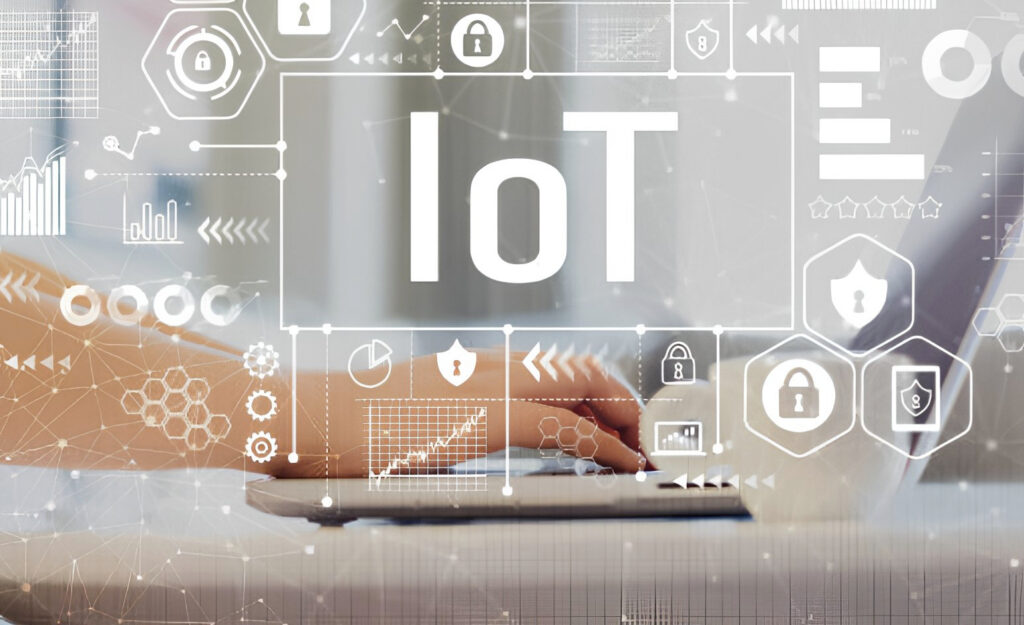As the landscape for smart home applications, e-healthcare, smart cities, connected cars, and industrial automation evolves, the Internet of Things (IoT) is undeniably considered the heartbeat of the Fourth Industrial Revolution.
“The global Internet of Things market size is projected to reach USD 1,463.19 billion by 2027, with a compound annual growth rate (CAGR) of 24.9% during the forecast period.”
— Fortune Business Insights
The increasing adoption of IoT in healthcare, precision farming, sustainable energy, transportation, and manufacturing is significantly driving market growth.
Companies now rely on IoT and artificial intelligence (AI) to boost productivity.
OEMs and solution providers are racing to innovate, struggling to differentiate their products through enhanced functionality and connectivity to stand out from the competition. Amid this momentum, new opportunities are emerging for technology partners.
However, choosing the right IoT partner remains a critical and demanding process.
Finding a Reliable IoT Connectivity Partner
Product development is inherently complex, and it becomes even more so when connectivity is introduced.
Working with a strong IoT connectivity partner helps implement IoT solutions cost-effectively and securely while ensuring scalability and long-term business success.
Here are four key steps to consider when choosing your IoT connectivity partner:
Step 1: Identify a Partner with Proper Domain Expertise
Every industry has specific connectivity needs. Fully understanding a potential partner’s domain expertise says a lot about the future success of your collaboration.
For instance:
- Manufacturers managing logistics may require reliable machine-to-machine (M2M) connectivity.
- Autonomous vehicle projects demand multi-connectivity management for 5G V2X communication.
Experience matters most when it comes to IoT deployment. Choosing a partner that has already executed multiple projects in your sector will save both time and money.
Step 2: Find an IoT Partner with Manufacturing Expertise
Among the many technology providers available, those who stand out offer a complete IoT ecosystem—from sensors to cloud integration.
Manufacturing expertise ensures the ability to:
- Build end-to-end IoT solutions,
- Handle large production volumes,
- And help clients launch new connected products efficiently.
Step 3: Ensure Scalability and Flexibility
IoT scalability is a major challenge. There is a vast difference between managing a few devices and thousands of them — scalability must be planned from day one.
As clients grow, solution providers should scale their services without compromising security or functionality.
Choosing ready-to-use IoT platforms that include cloud connectivity, device management, and data visualization modules can give your business a competitive edge.
IoT platforms also simplify data plan management and help efficiently scale deployments.
Beyond the physical devices, IoT projects rely on various network protocols (Wi-Fi, LoRa, Zigbee, Satellite, etc.) depending on specific communication needs.
“Developing an expanded catalog of connectivity protocols is essential to adapt to different infrastructure constraints.
We rely on a technological ecosystem of leading partners mastering a wide range of connectivity networks and protocols.”
— Ahmed Ben Aissa, Chief Operating Officer
Step 4: Verify the Operational Support Provided
The success of your IoT project depends on more than just technology.
Operational support, consultancy, sales training, and troubleshooting assistance are crucial.
By working with a trusted IoT connectivity expert, you can:
- Increase profitability and scalability,
- Enhance your product offering,
- Access the latest IoT technologies,
- Benefit from dedicated technical support,
- And simplify device management processes.
Empowering the Full IoT Lifecycle
Our connected solutions are designed to support every stage of your IoT project — from Proof of Concept (PoC) to deployment and scaling.
We deliver a seamless user experience and simplify the management of wireless connectivity for your business.
👉 Talk to our connectivity experts for a seamless connectivity experience
Sources:
- “How IoT Could Power the Future and What Could Stop It” — EY
- “Internet of Things Market” — Fortune Business Insights
- “IoT Signals Report” — Microsoft
- “Partnerships and Ecosystems for Industrial IoT” — Get Connected Blog
- “IoT Scalability Issues: 5 Essential Considerations” — BEHRTECH


